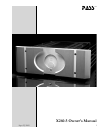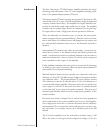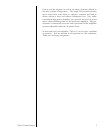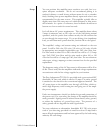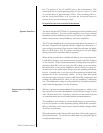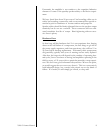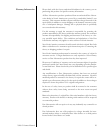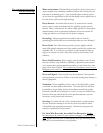
4
X260.5 Owners Manual
You can position this amplifier most anywhere you wish, but it re-
quires adequate ventilation. We do not recommend placing it in
enclosed cabinets or small closets without means for air to circulate
freely. Stacking these power amplifiers directly upon each other is not
recommended for the same reason. This amplifier typically idles at
slightly more than 250 watts, most of which dissipates as heat across
the heatsinks. As a point of reference, these heatsinks should never
become too hot to touch for several seconds.
Let’s talk about AC power requirements. This amplifier draws about
2 amps (continuous rms) at 120 volts out of the wall during normal
operation, and this power draw reflects mostly the idle current that
we run through the output stage. If you are driving a low impedance
load, you will draw more power than this, but this will not be typical.
The amplifier’s voltage and current rating are indicated on the rear
panel. It will be 240 volts, 220 volts, 120 volts or 100 volts, all with
an appropriate rear mounted replaceable type 3AG slow blow fuse.
For units rated at either 220 or 240 volts the fuse will be a 2-1/2 amp
type 3AG, 250V slow blow and for units rated at either 100 or 120
volts the fuse will be a 5 amp type 3AG, slow blow. Do not substitute
other types, voltage, amperage or time constant fuses for the specified
replacement.
The frequency rating of the AC line source in all instances will be 50 to
60 Hz. Please verify that the amplifiers indicated voltage requirements
are consistent with the line voltage supplied at your location.
The Pass Laboratories™ X150.5 is provided with a conventional IEC
detachable AC line cord, which is rated at 15 amps. The safety ground
is attached to the chassis in the conventional approved manner. The
AC power input to the amplifier runs through a RF filter, which re-
moves high frequency noise coming into and going out of the ampli-
fier power supply.
Under no circumstances should you defeat the ground connection of
the power cord. For your safety, the chassis of the amplifier should be
earth grounded. Signal ground is isolated from chassis, safety ground,
to reduce the incidence of ground loop noise. The presence of a
safety ground will not degrade the audio signal chain.
You may substitute an aftermarket detachable IEC 320 style power
cord of your choosing; provided it is rated for at least 15 amps and it
meets all legal requirements and has been approved by the local testing
authority for such things.
Setup



